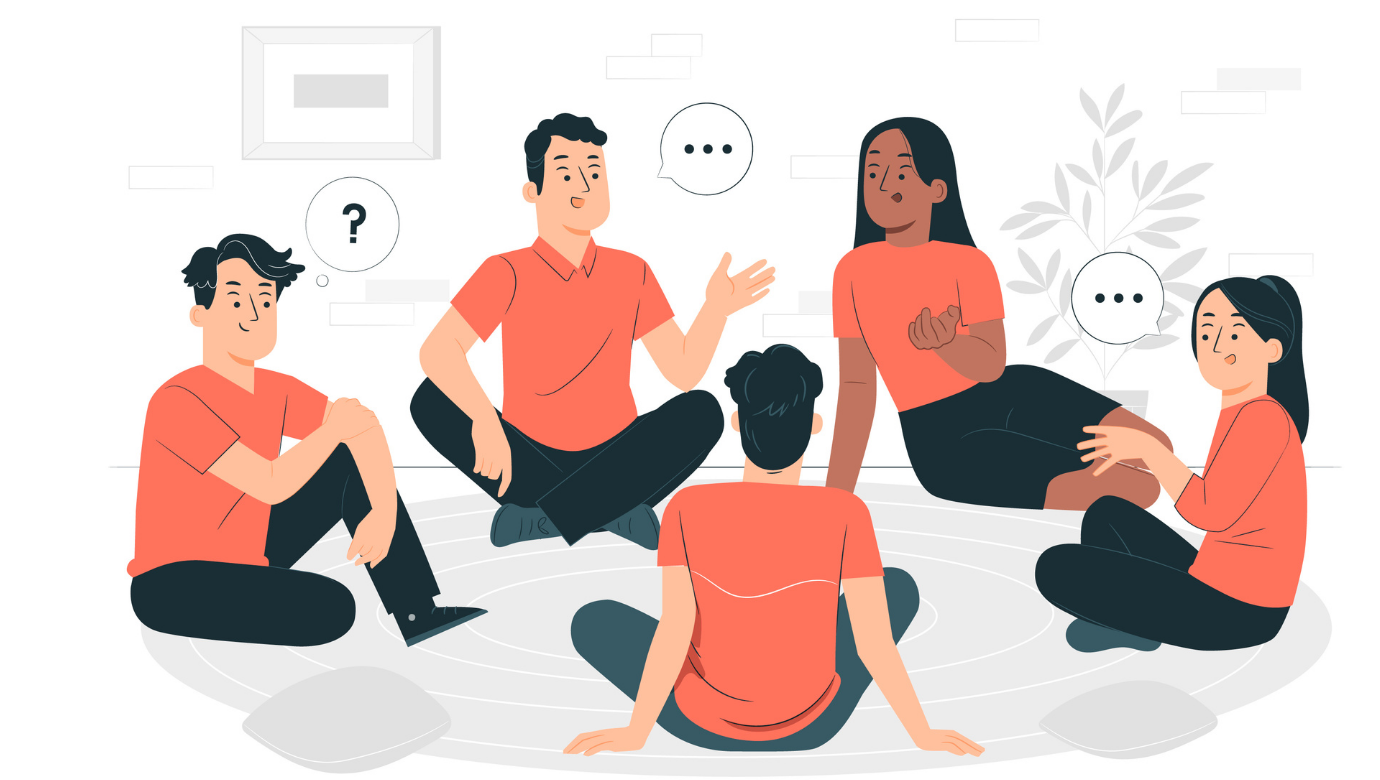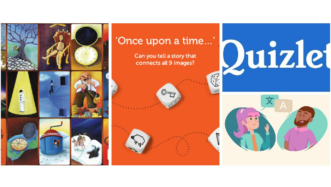When asked why they study English, most students will say it’s because they want to communicate. They might also want to find a better job, pass an exam or simply be better at English, but oral communication is what students usually put very high on their priority list. What is more, many foreign language students admit that the fact that they can speak a language they couldn’t speak, say, a year earlier, makes them feel extremely satisfied and keeps them motivated. Whether you teach low-level or advanced learners, use these five speaking fluency activities for ESL students to help them communicate better in English. You can use the activities as warm-ups, fillers, and whenever you feel that your students (and you!) need them.
1. Small talk

Used every day by people all over the world, small talk or a quick chat is a great way to practise fluency, revise and make students feel more confident about speaking English. It can be used with students on all levels and repeated regularly in different forms. You can simply ask your students how their weekend was, or how they’ve been, but you could also choose a couple of questions from the list below to make the classroom small talk more varied. Ask follow-up questions and encourage other students to do so, too.
- Do you like the weather today? / Is it too cold or too hot for you? / Do you think it’ll rain?
- What were three things you did before the lesson? / Did you have to rush to get here on time?
- What time did you get up this morning? / What time do you think you’ll go to bed tonight?
- What have you eaten today? / Who have you talked to today?
- What’s the most exciting thing you have done today? / How has your day been so far?
- What’s the most boring thing you need to do this week? / What are you looking forward to this week?
- What have you heard on the news lately?
- Have you seen any good films recently? / Have you seen any funny videos on YouTube?
- Have you spoken, watched or read anything in English since our last lesson?
- What five words or phrases can you remember from our last lesson? What do they mean or when do we use them?
If you want your students to practise small talk more, check out our lesson plan on small talk.
2. Photos

Visual aids are not only a great prompt for speaking, but they also make the lesson more interactive and engaging. Regardless of the students’ level, they are a valuable tool for practising speaking. There are numerous websites where you can generate random pictures (like here or here) and use them to make your students talk. Apart from the obvious ‘describe the picture’ part, use the set of questions below to make the task more interesting or more appropriate for high-level students. The questions work with any picture, and develop not only speaking fluency, but also the ability to think critically in English.
- Why was the photo taken/the picture made?
- Where would you expect to see it?
- Would you set it as the wallpaper on your computer?
- What feelings does it evoke in you?
- Would you change anything in it to make it more interesting?
- Have you ever taken a similar photo/made a similar picture?
Do you think your students could benefit from such speaking fluency activities? In this lesson for lower-level students you will find tasks to help with picture description, and at the end of this lesson for advanced students you will find sets of photos with extra questions.
3. Would you rather…?

An oldie but a goodie. Everybody likes talking about their preferences, and as teachers we can use this fact to get our students talking. The rule here is that students must explain why they prefer something over something else, because that is when production happens. Use the examples below, and once your students get the gist of the activity, ask them to prepare more of the ‘Would you rather’ questions in pairs. Give them a theme: holidays, work, lifestyle, possessions, extremes, etc. They can then answer other students’ questions.
Would you rather…?
- visit the Sahara or Antarctica
- spend a week without your phone or sleeping on the floor
- be the richest person in the world or the most beautiful person in the world
- study physics or literature
- be a shop assistant or a doctor
- live by the beach or in the mountains
- celebrate your birthday every week or never celebrate it again
- live right next to a stadium or an airport
- be too busy or be bored
- be able to breathe underwater or fly
4. Don’t stop talking

This is one of the best speaking fluency activities for ESL students to use if your lower-level learners still don’t feel comfortable speaking English. The purpose is to let them have a simple conversation with a partner, without worrying about accuracy, and enjoy the fact that they are able to communicate in a foreign language. Put your students in pairs and tell them they will talk about a topic you give them for two minutes. Tell them the point is to keep the conversation going, and that they can say whatever comes into their mind. That means they can share their own opinions and experience, but also ask their partner questions. You, the teacher, want to hear them speak English and that’s all you ask.
Some possible topics for the two-minute conversations include: weekends, food, films, pets, birthdays, shopping, family, cities, travelling, school. If you want to make it more interesting, choose some of these less obvious topics: carrots, socks, dolphins, dentists, headphones, windows, jars, islands, queues, coffee.
5. Is it something we have in common?

This simple activity creates lots of opportunities for students to ask questions. The following are some examples of what you might say to your students about yourself. You can obviously adapt the sentences so that they are true for you.
- I always listen to classical music in the car.
- I have four pairs of trousers.
- There is a lamp in the corner of my bedroom.
- I’ve had two cups of tea today.
- I finish work at 7 on Thursdays.
- I went abroad twice last year.
- I can make lasagne and sushi.
- I was at a friend’s birthday party last weekend.
After hearing or reading one of your sentences, students talk in pairs or groups to establish if it is something you and they have in common. It probably isn’t, so they will get one minute to modify the statement so that it is true for the three of them. This will require either asking their partners questions (e.g. Where do you listen to music? Do you listen to classical music? Do you always listen to something in the car?), or talking about their own experience, e.g. of listening to music and going places by car, until the other students decide that it is also true for them. (There might be students who, once they realize a sentence is untrue for all of them, will simply turn it into a negative, or change the beginning to ‘My English teacher…’. Make sure they know that is not what the activity is about.)
If you want your students to practise asking questions more, have a look at this lesson plan.Fluent speaking is arguably the most desirable skill for English learners. At ESL Brains, we always try to give it priority in the lessons we design, but it ultimately depends on you, the teacher, how much speaking practice your students are given. How do you create speaking opportunities in the lesson? Which of the no-prep speaking fluency activities for ESL students will you use to help your students communicate better in English?












Great tips! I often use them during my classes!
Me too 🙂 It’s amazing to see how quickly simple activities like these give students confidence in speaking.
Thanks for the inspiration! It’s always nice to have a few fresh ideas, or even just a reminder to dust off some classic, well-loved activities too. 🙂
I know. We sometimes do so much lesson prep that we forget that some simple ideas can be really effective.
I have a student who really struggles with any kind of conversation about herself. We often use photos of individuals and groups, and I ask leading questions about them. She has opened up tremendously, and I can now sneak in questions about her, as well. She’s really responding well to this.
I like the idea of asking her to talk about other people first, then about herself. Sounds like you’ve really helped her.
Thank you for these brilliant ideas!!! They ll boost my worming ups and some conversation courses too!!!
Thanks! I’m glad to hear it 🙂
Great tips! My students had lots of fun with them!
Thanks, Stephanie. It’s good to hear your students enjoyed them 🙂